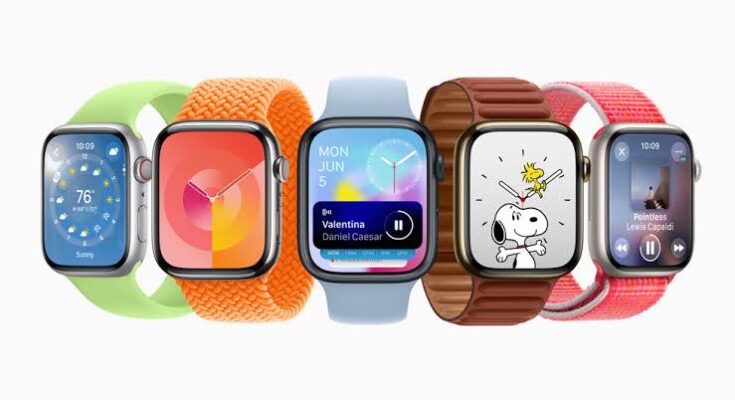Rumors about the Apple Watch Series 10 have been notably scarce compared to previous product launches. This is unusual, given the high level of anticipation that typically surrounds Apple’s flagship devices. However, reports are now starting to surface ahead of Apple’s upcoming event, where the Watch Series 10 is expected to be unveiled alongside the iPhone 16. One of the most significant rumored upgrades is an enhanced ECG sensor, which, according to 9to5Mac, will have the ability to detect signs of sleep apnea—a condition where breathing repeatedly stops and starts during sleep.
The inclusion of this feature could mark a significant advancement in the Apple Watch’s role in health monitoring. Sleep apnea is a serious and often underdiagnosed condition that can lead to various health issues, including heart disease, stroke, and chronic fatigue. By integrating sleep apnea detection into the Apple Watch, Apple could help raise awareness of the condition and encourage earlier diagnoses, potentially improving health outcomes for millions of users.
Apple has been positioning its Watch as a comprehensive health and wellness device for several years. Previous versions of the Apple Watch have included features like heart rate monitoring, an ECG app for detecting atrial fibrillation, and blood oxygen level tracking. The addition of sleep apnea detection would build on this foundation, further enhancing the device’s capabilities as a health monitoring tool.
The potential inclusion of sleep apnea detection is part of a broader trend in wearable technology, where companies are increasingly focused on integrating advanced health-tracking features. Devices that can monitor heart rate, blood pressure, blood oxygen levels, and now, potentially sleep apnea, represent a shift towards more proactive healthcare—empowering users to monitor their own health and seek medical attention when necessary. For Apple, this rumored upgrade in the Watch Series 10 reflects its ongoing efforts to expand the Watch’s functionality beyond fitness tracking and into more medically relevant applications.

This report from Bloomberg complements growing speculation about the Apple Watch Series 10’s potential role in health diagnostics, particularly with the ability to identify signs of sleep apnea. Sleep apnea is a serious medical condition that affects millions of people worldwide. It occurs when an individual’s breathing repeatedly stops and starts during sleep, leading to disruptions in sleep quality and potentially serious long-term health consequences. Common symptoms include loud snoring, gasping for air during sleep, and daytime fatigue. However, sleep apnea is often underdiagnosed because many people are unaware they have it.
Integrating sleep apnea detection into a widely used consumer device like the Apple Watch could revolutionize how this condition is diagnosed and managed. Currently, diagnosing sleep apnea typically requires an overnight sleep study (polysomnography) in a clinical setting, where a patient’s breathing, oxygen levels, and brain activity are monitored. This process can be time-consuming, expensive, and uncomfortable for many patients. By contrast, the Apple Watch Series 10 could provide continuous, non-invasive monitoring of potential symptoms in the comfort of the user’s home, offering a more convenient, accessible method for early detection.

If the Apple Watch detects irregularities in the user’s breathing patterns—such as frequent pauses during sleep—it would recommend that the individual consult a healthcare provider for further evaluation. This early intervention could encourage users to seek medical advice sooner, potentially reducing the long-term risks associated with untreated sleep apnea, such as high blood pressure, heart disease, and stroke.
Apple’s potential move into sleep apnea detection reflects the broader shift in wearable technology from fitness tracking to comprehensive health monitoring. The ability to detect sleep apnea also ties into Apple’s vision of making the Watch a central tool for preventative health care. By alerting users to symptoms they may not otherwise notice, the Watch could play a critical role in bridging the gap between everyday health tracking and professional medical care.
Moreover, this feature could pave the way for further advancements in the Watch’s health-related capabilities. As Apple’s health sensors become more sophisticated, they may be able to monitor other sleep disorders or related conditions, such as insomnia or restless leg syndrome. The Watch’s data collection, combined with Apple’s focus on privacy and secure health data management, could also contribute valuable information to the healthcare community, further advancing research on sleep apnea and other conditions.
In summary, incorporating sleep apnea detection into the Apple Watch Series 10 has the potential to make a significant impact on public health. It aligns with Apple’s broader strategy of turning the Watch into a proactive health tool, offering early warnings about health issues that can lead to more timely and effective medical interventions. This development could also contribute to the growing trend of consumer technology companies playing an increasingly important role in healthcare and wellness.
Potential enhancements for the Watch Series 10 may include marginally larger displays, a slimmer case design, and improved water resistance, which would facilitate compatibility with the Apple Watch Ultra’s Depth app. Furthermore, according to 9to5Mac, Apple may modify the way its sensors process health-related data, potentially transitioning the detection of atrial fibrillation from the Apple Watch itself to the Health app. These changes could signify a shift toward more integrated and efficient health monitoring capabilities within Apple’s ecosystem.
Even with these improvements, the Watch Series 10 may lack one key feature from the Watch Series 9: the blood oxygen sensor. Apple had to remove this sensor from its current models due to a patent dispute with Masimo.



